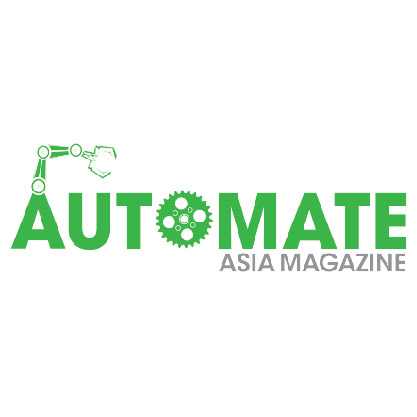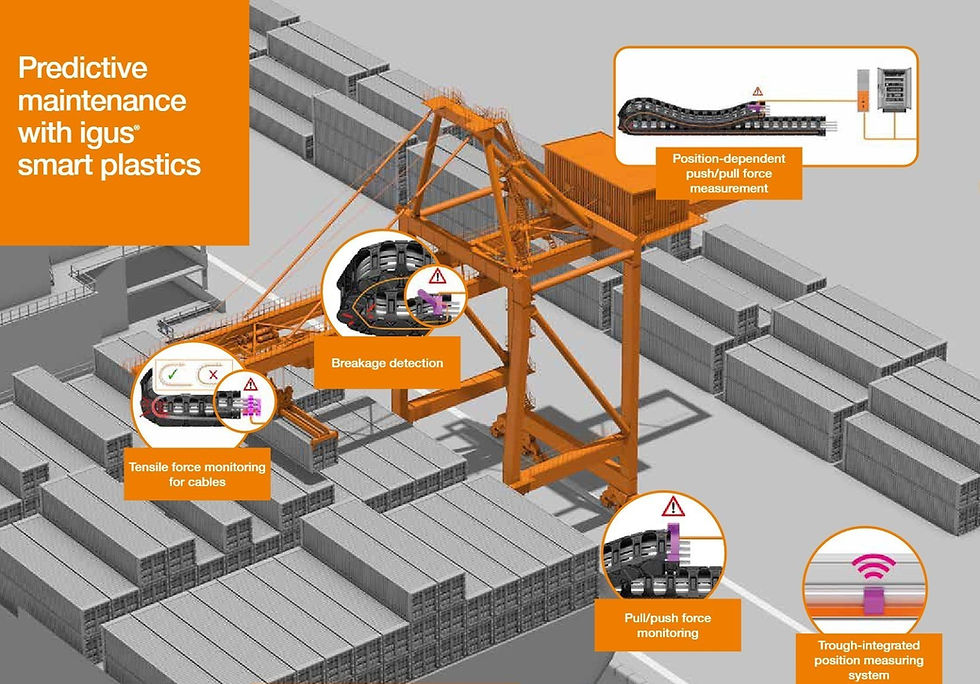The Promise of Digital Transformation Begins with Industrial Data
- Automate Asia Magazine

- Aug 10, 2023
- 6 min read
Marcel van Helten, President, Red Lion Controls

It’s an exciting time for industrial enterprises. The United States is seeing considerable growth from reshoring and global industry is thriving. And while inflation and labor shortages introduce new stresses, that pressure is speeding up the uptake of new optimizations and automation.
The most significant and dynamic change, however, is Artificial Intelligence (AI). Industrial businesses, alongside businesses around the world of every shape and size, are under pressure to digitally transform. Leveraging AI is key to staying ahead in the modern industrial landscape. Those insights are needed to optimize manufacturing, improve scheduling, do predictive maintenance, bring new efficiencies to operations, and bring added precision and clarity to business decision-making.
INDUSTRIAL DATA FOR A NEW ERA OF PRODUCTIVITY
Seizing the moment and moving forward with AI is a plausible goal. AI-derived insights can help businesses discover opportunities. They can help companies produce more, save more, earn more, gain efficiencies, grow, and modernize. The baseline for those discoveries is, of course, data.
For many industrial companies, this is where the dream of digital transformation dissolves into a series of question marks. The one I hear from business owners and sector leaders every day is: "How can we get data from our industrial systems?" Those who run small-to-medium-sized operations have the most questions. With less capital to play with for digital transformation, the stakes are high, as is the cost of investment.
For them, digital transformation can be a messy business. For them, data isn’t magic. It’s not ones and zeros and instant uploads and seamless connections. Industrial businesses have the physical world to contend with. Their systems might be in rugged, remote locations. Their equipment might be on factory floors in a range of countries and time zones simultaneously. Their installations might be in areas marked by extreme weather conditions. Their operations might encompass hundreds of pieces of specialized legacy equipment on plant floors dotted across the country.
Industrial companies are eager to embrace data and leverage digital tools to grow, learn, and scale. The problem is, they need no-nonsense ways of extracting data from operational technology (OT). Not only that, but they need ways to connect it, group it, share it, secure it, and visualize it.
TACKLING THAT TREACHEROUS FIRST MILE
As with most significant change opportunities, the first mile is the hardest. That's certainly true for industrial data. Depending on the nature of your business, you know it's not always easy to access data platforms. Some of you face heat waves, flooding, and sub-zero weather conditions. Any system you invest in to derive and deliver data needs to be robust and ruggedized to survive those conditions.
Furthermore, a lot of perfectly well-functioning industrial and manufacturing processes have evolved over decades. Just look at power and utility generators, transportation infrastructure, and wastewater plants. Old doesn’t mean bad. Most companies don’t have the luxury or, more importantly, the need to start over from scratch. Old machines that have stood the test of time are fixed to plant floors alongside state-of-the-art equipment. That wild mix of legacy and new technology is commonplace across many industry sectors. At the same time, that variety complicates data extraction.
Industrial companies need simple data access solutions that can speak across their systems, however varied, unique, or outdated. Without them, data stays locked away. To follow through with digital transformation plans, companies need a way to gather data securely and reliably, independent of any single Programmable Logic Controller (PLC) or automation manufacturer software. And while exciting new startups are entering the process optimization space, many are simply too new to grasp the unique challenges involved in extracting industrial data and making it usable to decision-makers.

ACCESS, CONNECT, VISUALIZE
Many enterprises consist of remote assets, such as water treatment plants, solar power
plants, wind turbines, or decentralized power generation units. To derive insights, they need to access equipment installed on-site and bring data to a central location.
We've worked with a packaging supplier, for instance, with packaging machines all over the world. It wanted to integrate system data from all those sites, to analyze it and help its customers. However, software-focused solutions simply couldn't understand all the vendor installations to achieve the necessary centralization.
Cloud connectivity, edge intelligence, and asset management for industrial environments demand specialized access capability. That might mean access to older controllers and remote field sensors actuators, and integration with multi-vendor environments.
After that, those assets need to connect. Some companies need to link robots to an automotive plant. Others need to plug sections of individual wind turbines together, then connect those turbines to others across a vast geographical area. That kind of networking isn't a software problem, it's hardware.
Installations need ruggedized industrial networking solutions and Ethernet switches to direct and secure outgoing data and function without interruption. Once that reliability is achieved, those can plug into middle software layers or a Manufacturing Enterprise System (MES) for higher-level analytics. It's a big game of "connect the dots," but for data.
Finally, companies need to visualize data, to make it actionable on-site and beyond. Operators on the factory floor and in the field need counters, temperatures, and digital readings of values that can be used at the moment and sent to the cloud. For that, they need Internet of Things (IoT) devices that are compatible with very specific manufacturing shop floor machinery and for remote and rugged field environments.
OUT-OF-THE-BOX SOLUTIONS TO BRIDGE OT AND IT
Access, connectivity, and visualization devices might seem like standalone or dissimilar elements, but they come together to perform one essential job: they form the critical bridge between OT and IT. Those departments might traditionally have different priorities and strengths, but they must work together. The right hardware and software configuration can be that bridge.
Today, data transfer and storage need to meet increasingly stringent security and regulatory requirements. They also need to meet customer expectations for speed and flexibility. That usually means OT needs stricter access control and new strategies to shield data and systems from attack. On the other hand, sometimes IT lacks a correlating context to make OT data meaningful. The data might be in the cloud, but it’s supplied too late or lacks contextualizing detail. As a result, OT is stuck in a reactive position, prevented from making predictive decisions or getting ahead of likely production or maintenance scenarios. The OT equipment is what generates profit; its data needs to be made intelligible to decision-makers to unlock insights and drive growth.
The key to bridging the two perspectives is a platform that unites the features of OT and IT with maximum interoperability. We’ve been working with industrial systems and data for 50 years. We’ve seen IT emerge and evolve, and we understand the evolving needs of both IT and OT audiences. For these departments to come together and serve each other, enterprise connectivity solutions need to be simple to use, resilient, intuitive, and secure. They need to be durable and deployable right out of the box.
DATA ISN’T MAGIC
Those of you who’ve worked in the industrial space for as long as we have are hardwired for different kinds of challenges and solutions. We’re entering an amazing new era of AI-powered productivity, but no matter how dazzling it might seem, data isn’t magic. You can’t slap a software-only solution on top of these installations and just press a button.
You have to have a deep grasp of the ins and outs of data gathering in hard-to-reach spaces, across legacy technology that works well for a reason. You need to know how to deliver that information efficiently, securely, and intact, to different communities of users to benefit the business.
Industrial companies need someone who understands the challenges and particularities of industrial data – accessing it, connecting it, and visualizing it – so the critical data analytics processes layered on top of that work instantly, seamlessly, and robustly. They need a trusted partner to unlock the promise of digital transformation. Given our track record in this domain, we are that partner. We are THE Industrial Data Company™.
That transformation journey starts with that messy but exhilarating first mile. Over the coming weeks, I’m going to dig deeper into aspects of this journey, with insights and customer stories that illustrate why industrial contexts are different and why industrial data needs special expertise, technology, and hardware.
There are a lot of data companies out there. What does it mean to be THE Industrial Data Company?
To find out, follow us on LinkedIn® — and join the conversation.





-01.jpg)


